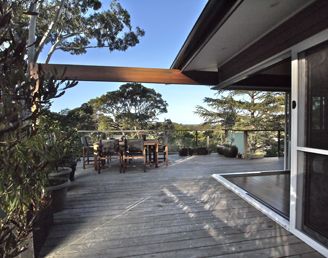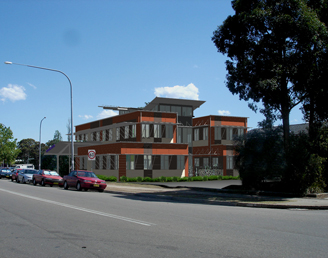The (other) great air con con
Posted by admin on 06/09/2012 at 4:39 pmAt Envirotecture we have a reputation for being militant anti-air conditioning. This is almost entirely true. But why? There are oh so many reasons. Here I look at the problem of peak demand caused by mass use of air con, and its effect on electricity pricing, especially at peak times.
Let’s start by explaining that there are times when a heat pump HVAC system of some kind is an appropriate bit of kit. Not many times, but they do happen. Some sites in extreme climate zones might need a bit of additional energy to help things along, or some special uses buildings that have particular requirements… can’t think of any others right now. Heat pumps are also good at boosting solar hot water when needed, including hydronic heating. And they are great at keeping fridges cold.
To say that the average family home or office needs air con is, frankly, a con. It is a reflection of how poor the building envelope is. This I have blogged about before (see index here).
But there is another con, and it is even worse in some ways – where air con robs the poor to keep the rich comfortable. The rich in this case being anyone who can afford to run air con through most of summer and “need to” because they are unfortunate enough to live in crap houses. Therefore, some of those people may not be very rich at all, and getting poorer with every kilowatt-hour!
An excellent article by Matt Wade in smh.com.au puts the situation very eloquently:
“This summer, the two-thirds of NSW households with airconditioners will be cross-subsidised by about the one-third that don’t. …the way the electricity market works means our airconditioner fetish comes with hidden costs.
“Because each unit draws a lot of electricity they put major demands on the power generation and distribution system when many are switched on at once (a single airconditioner can use the same amount of electricity as 40 fans).
“The companies that own and maintain the state’s electricity poles and wires have invested huge amounts upgrading the distribution network to cater for the peak demand caused by airconditioners on hot days between 4pm and 8pm. High energy appliances – especially airconditioners – have a bigger impact on peaks in electricity demand than population growth, household size or income.
“The surge in demand caused by airconditioners also forces electricity generation companies to temporarily ramp up production on hot days using more expensive methods of making electricity.
“But the way Australian electricity consumers are billed means the huge costs of catering for peak demand are spread across all small users through higher average prices. The extra generation and network costs are passed onto every consumer. In effect, those switching on the airconditioner at times of peak demand are not paying for the full cost of their actions and those without airconditioners are paying more than they should.
“This system isn’t just unfair, it’s wasteful because more and more capacity is being installed at great expense but rarely used. About a quarter of retail electricity costs come from peak events over a period of less than 40 hours a year. You don’t have to be an electricity industry economist to work out that’s inefficient. Last month Julia Gillard likened it to building a 10-lane freeway with “two lanes that are only used or needed for one long weekend”.
It’s another reason why passive design is so very important, it’s not a fringe luxury at all!
Read more: http://www.smh.com.au/opinion/an-air-con-when-the-poor-pay-to-cool-the-rich-20120904-25cjh.html#ixzz25ZxgU0ev
Sustainable House Design
We will help you create a family home that works well, feels good, is kind to the environment, culturally appropriate and reduces your energy and running costs.
Read MoreSustainable Commercial Buildings
We design your building to help reduce your operating costs, optimize the life cycle of your building, increase your property value and increase employee productivity.
Read MoreWorking with Envirotecture
We design beautiful, sustainable buildings that work for you, your family or your business. Full range of building design, consulting and training services.
Read More






















